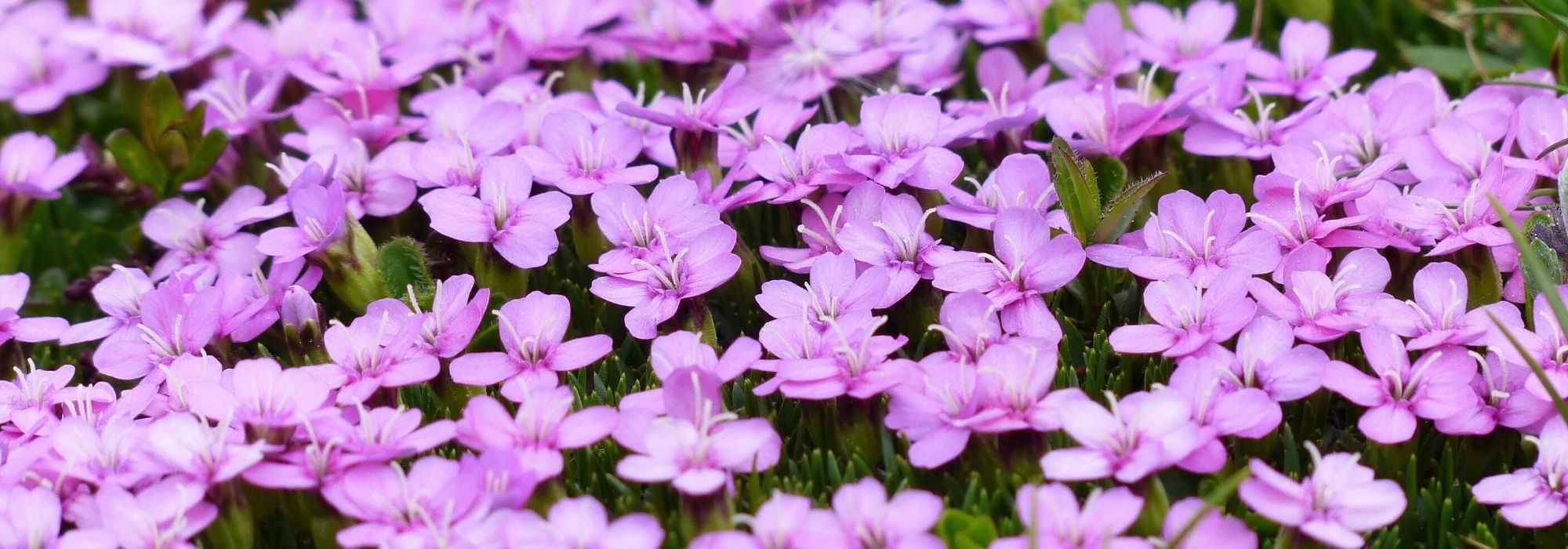
Campion: sowing, planting, growing
Contents
Silene in a nutshell
- Most Silenes are lovely groundcover perennial plants that are easy and generous
- They often form persistent flowering cushions of pink or white in summer
- They thrive in rocky mediums, on calcareous soils
- Combining sturdiness and delicacy, they are small, low-maintenance plants that are very easy to grow
- They are used in rockeries, stone walls, and also in flowering pots
A word from our expert
Silene or called rose or sea campion is a lovely little perennial, most often spreading, forming semi-evergreen to evergreen cushions adorned with flowers in pink, white, or more rarely red from summer to autumn, depending on the species.
This cousin of the carnations is a hardy and undemanding plant that requires very little maintenance, much like Silene acaulis and Silene schafta, also known as Caucasian Silene. Silene species, like Silene vulgaris (common Silene), are recognised by their swollen calyx and vibrant flowering with notched petals. All leaves are edible, whether raw or cooked, with those of Silene latifolia (White Campion) being particularly tasty.
Its preferred locations include walls, the edges of flower beds and terraces, rockeries, as well as pots and half-barrels.
It is easy to cultivate in all light, well-drained soils, ideally exposed to sunlight. It dislikes clay soils that become waterlogged, preferring permeable, stony soils that are dry to moist.
Whether as a flowering cushion or a bushy perennial, discover in our range the different species of Silene we offer.
Botany
Botanical data
- Latin name Silene
- Family Caryophyllaceae
- Common name rose campion, sea campion, bladder campion
- Flowering April to October depending on species
- Height 5 to 60 cm
- Exposure Sun, partial shade
- Soil type poor and well-drained, stony, dry to moist
- Hardiness -15°C
Silene is a perennial or annual plant belonging to the Caryophyllaceae family, just like carnations and lychnis. There are nearly 300 species found spontaneously in meadows, slopes, crevices of rocks, and scree, primarily in calcareous sites. It naturally grows in the northern hemisphere, in the subarctic regions of Asia, North America, and Europe, as well as in mountainous areas. Some species, such as Silene acaulis, also known as cushion of the Alps, are found in our mountains, in the northern and southern Alps, up to 3700 m in altitude.
Among the most widespread perennial species, we find:
- the stemless silene (Silene acaulis)
- the sea campion (Silene maritima), a species native to the coasts of Western Europe
- the Silene shafta
- the Silene latifolia, the white campion
- the Silene dioica, the red campion
- the Silene x robotii
- the laciniate silene, a Californian species
And this does not account for the numerous horticultural varieties obtained through hybridization. This very large family includes tall or short species, offering a varied choice of sizes, habits, shapes, and flower colours.
Silene roots deeply, more or less quickly, but only for a few years. However, it self-seeds spontaneously and can thus persist for a long time in a garden.
The habit varies according to species: cushion-forming for some, like Silene acaulis and the sea campion, or tall stems in the case of Silene laciniata, compact and rounded for others, like Silene schafta.
The tallest silenes can reach 45-60 cm, while the cushion-forming species will not exceed 5-15 cm in height and 30-45 cm in width. The stems are very short and dense, measuring 2 to 6 cm, more or less prostrate in the case of spreading species or tufted, but longer and thinner in the taller silenes.

Some Silenes: Silene acaulis, Silene maritima and Silene schafta
Its foliage is semi-evergreen to evergreen depending on the species and the severity of the climate. It displays vigorous vegetation in bright green to dark green, sometimes grey-green. The leaves also differ from one silene to another. Silenes bear simple, linear, lanceolate, and opposite leaves, sometimes leathery, measuring from 1 to 8 cm long. The leaves are edible raw or cooked.
This beautiful leafy cushion hosts a cheerful and vibrant flowering from May to October; the flowering can be spring, summer, or autumn depending on the species. Emerging well above the foliage, small solitary flowers or those arranged in a sparsely branched cyme appear. They emerge from a swollen tubular calyx often tinged with red or brownish green and measure 1 to 3 cm in diameter. Their flattened corolla consists of 5 petals, most often deeply notched.
Depending on the varieties, the shape of the flower varies; it can be single or double. The flowers of the laciniate silene have the particularity of opening in a surprising star shape and consist of 20 petals cut into narrow and uneven strips, giving a starry appearance to the inflorescences. Colours range from pure white to bright red, passing through all shades of pink, from fluorescent to soft.
Small but numerous, these sometimes fragrant flowers emerge continuously throughout the summer season and are melliferous and nectariferous. They are highly visited by butterflies.
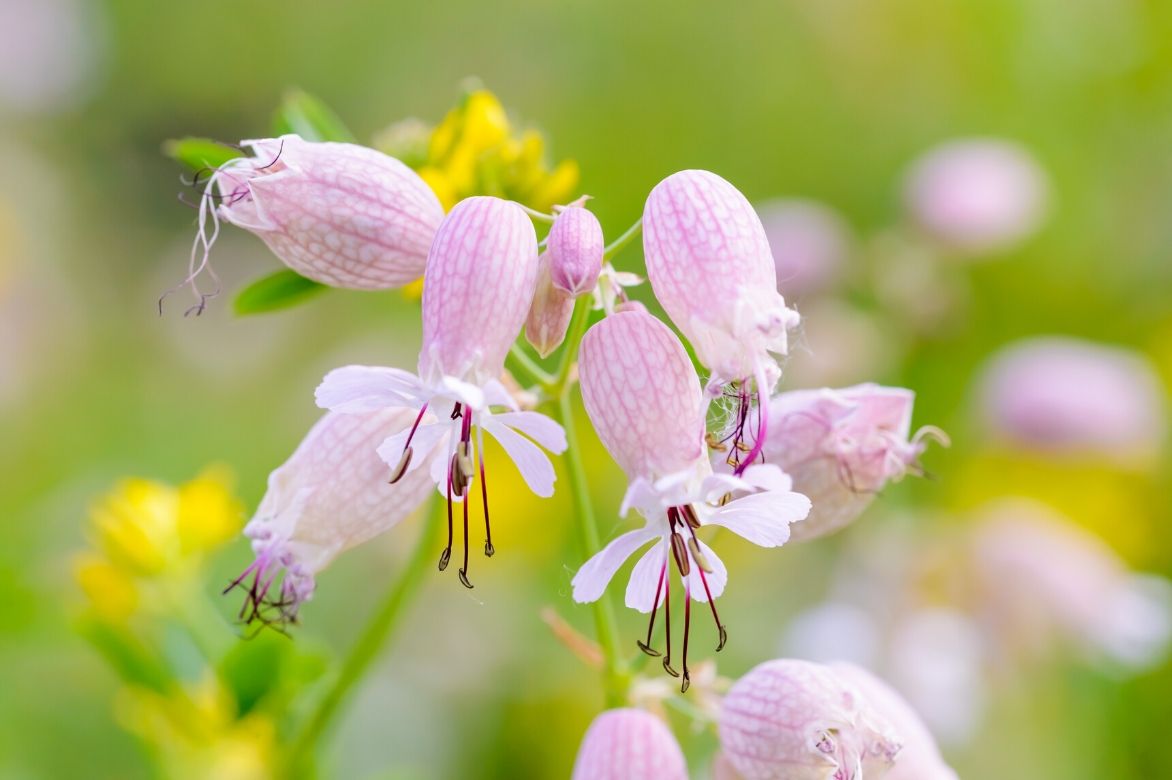
The famous swollen calyxes of Silene vulgaris
Once fertilised, they transform into small oblong capsules containing tiny seeds.
Silene is a frugal plant of slopes and rockeries, hardy sometimes beyond -15°C, tolerant of drought. It prefers calcareous and well-drained dry soils. It brightens up borders, alpine rockeries, perennial beds, walls, paving, or pots.
The plant derives its name from the Silenes, characters from Greek mythology, part of the satyr family, whose pot-bellied appearance resembles the swollen calyx of silene flowers.
Read also
15 plants for a sunny rockeryMain species and varieties
The family of silenes includes species that are either ground-hugging or of medium height, offering a beautiful variety of habits (spreading, upright, compact…), shapes, and petal colours.
The most popular ones
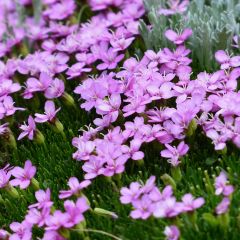
Silene acaulis
- Flowering time July to September
- Height at maturity 5 cm
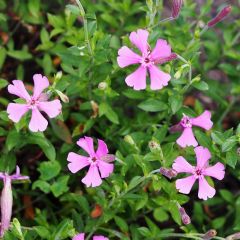
Silene schafta
- Flowering time September to November
- Height at maturity 25 cm
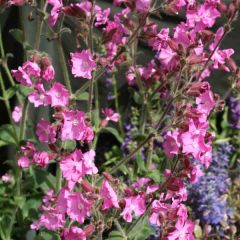
Silene robotii Rollies Favourite
- Flowering time June to August
- Height at maturity 40 cm
Our favourites
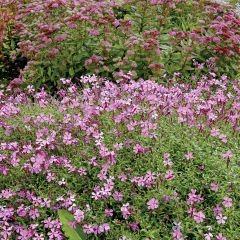
Silene schafta Splendens
- Flowering time August to October
- Height at maturity 20 cm
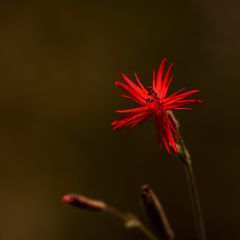
Silene laciniata - Mexican Catchfly Jack Flash Seeds
- Flowering time July to September
- Height at maturity 60 cm
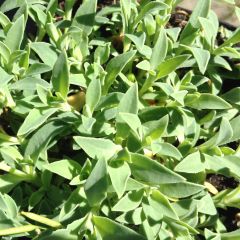
Silene uniflora Weisskehlchen
- Flowering time July to September
- Height at maturity 15 cm
Discover other Silene - Campion
View all →Available in 1 sizes
Available in 1 sizes
Available in 1 sizes
Available in 1 sizes
Available in 1 sizes
Available in 1 sizes
Available in 1 sizes
Available in 1 sizes
Available in 1 sizes
Planting
Where to plant it?
With excellent hardiness (down to -15°C), silene withstands cold and copes well with summer drought. It grows almost everywhere in France and even adapts to coastal areas.
This perennial plant is easy to grow in all ordinary soils, from light to well-drained, moderately moist to occasionally dry. Most silenes prefer a dry, permeable, and porous, stony soil. The Silene maritima requires a rather moist soil.
They thrive in full sun, avoiding overly scorching exposure. They can tolerate light shade as well as occasional drought and calcareous conditions.
The turf-forming species create low-maintenance flowering cushions that beautifully spill over rocky crevices, border beds, and walls, as well as balcony boxes, jars, and half-barrels. They are perfect for mountain gardens, alpine rockeries, and sunny borders.
Medium-sized silenes will be great allies for adding splashes of colour amidst a perennial plant bed or in a pot on the terrace.
When to plant silene?
Silene can be planted in spring from March to April or in autumn from September to November, avoiding periods of frost and drought.
How to plant and sow it?
The soil should be light, cool during summer, and especially well-drained, as excess water in summer or winter would be fatal. In heavy soil, add gravel or coarse sand at planting. Plant them elevated in humid regions. Depending on the species, plant between 6 to 9 pots per square metre.
In open ground
- Soak the pots in a bucket of water before planting
- Loosen the soil
- Dig a hole twice the volume of the pot
- Plant in a mixture of potting soil, garden soil, and sand, ensuring not to bury the basal leaves
- Add a good handful of compost to each planting hole
- Space the plants 25-30 cm apart
- Fill in with soil
- Lightly firm down
- Water to encourage rooting and during the first summer
In pots
Plant in a very well-draining substrate by adding gravel or pumice to the potting soil. Create a layer of clay balls at the bottom of the container to prevent standing water. Avoid leaving water in the saucers.
Sowing Silene
Silene seeds can be sown from March to May in trays with good potting soil. The seedlings will produce plants capable of flowering by their second summer.
- Sow the seeds broadcast and barely cover them with potting soil
- Lightly firm down and water generously with a fine spray
- Keep the potting soil moist but not overly wet during germination (14 to 21 days)
- Place your seedlings in light, without direct sunlight, at a temperature of 15-20°C
- When they have two to three leaves, transplant them into 7 cm pots
- By late May to early June, plant them in the garden when the soil is warmed
- Space your plants about 30 cm apart
- Water regularly
Silenes can also be sown directly in place when the outdoor temperature is around 15-21°C.
Maintenance and care
Once well established, the Silene requires little care and proves to be a trouble-free perennial, provided the soil remains perfectly drained.
Watering is recommended if spring is dry. In summer, the silene tolerates a short period of drought very well. However, avoid letting the soil remain dry for too long, as it is still sensitive to heatwaves.
When grown in a pot, it needs to be watered more frequently.
Remove faded flowers as they appear to ensure a long flowering period.
Lightly shear the clump after flowering to maintain a dense habit and ensure flowering the following season.
Divide the clumps every three years to perpetuate them.
Resistant to diseases, the young foliage of silenes can fall prey to slugs and snails: follow our tips to prevent gastropod attacks.
Propagation
This perennial is very easy to propagate from seeds. Discover how to sow silene seeds in the “planting and sowing” section.
Pairing ideas with Silene
Groundcover varieties such as Silene acaulis and Silene schafta Splendens will create lovely, low-maintenance groundcovers in raised beds, dry rockeries, well-drained slopes, and between the stones of a wall. They also adapt very well to pot or trough cultivation. They can be paired with other flowering cushions like moss phlox, avens, Aubrietes, helianthemums, dwarf wormwood (Artemisia lanata), walls campanulas, Caucasian rockcress, Delosperma cooperi, Erigeron karvinskianus, and Geranium sanguineum. They form beautiful carpets at the base of often bare roses.
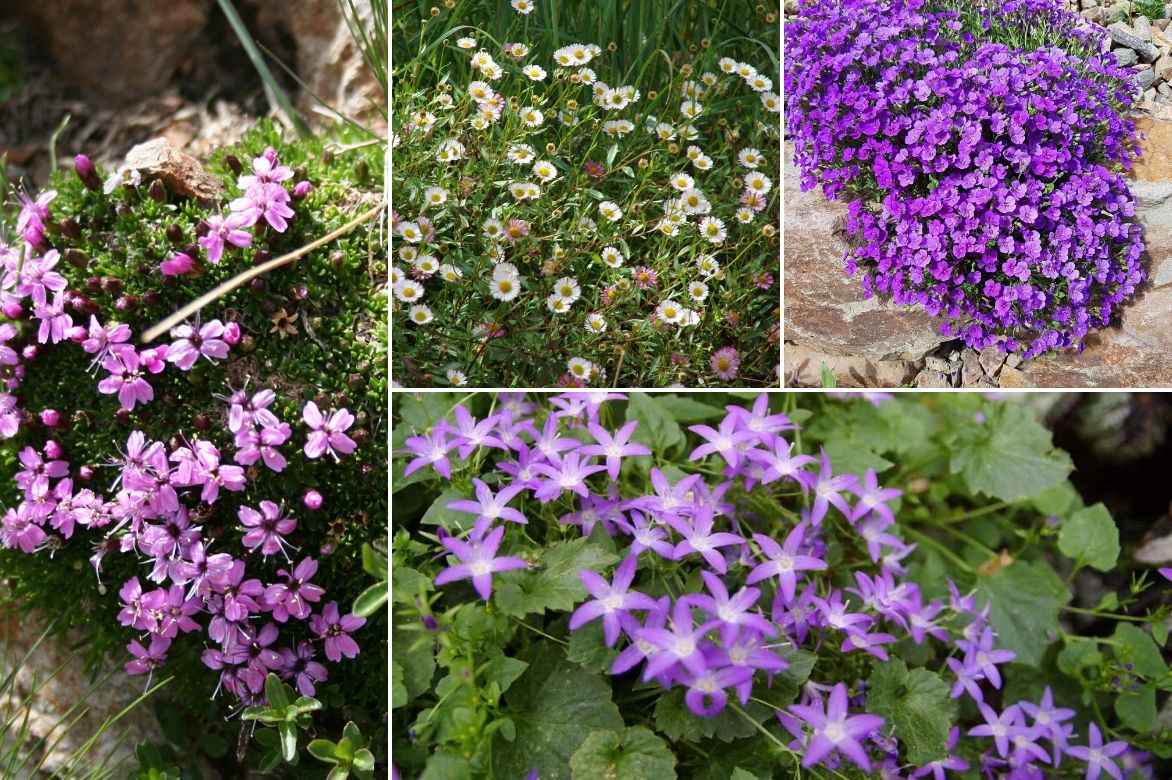
An example of a rockery association: Silene acaulis, Erigeron karvinskianus, Aubriète (©Fotolia) and walls campanula (the variety ‘Stella’ for example)
They form welcoming, floriferous cushions for summer bulbs such as lilies, gladioli, and agapanthus.
Large silenes like the laciniate silene will create beautiful colourful scenes in summer borders with cosmos, love-in-a-mist, nepeta, and yarrow and asters.
Useful resources
- Discover our groundcover perennial plants without worries and our plants for rockeries to use in the garden!
- Learn more about these incredible flowers that only open at night
- Subscribe!
- Contents
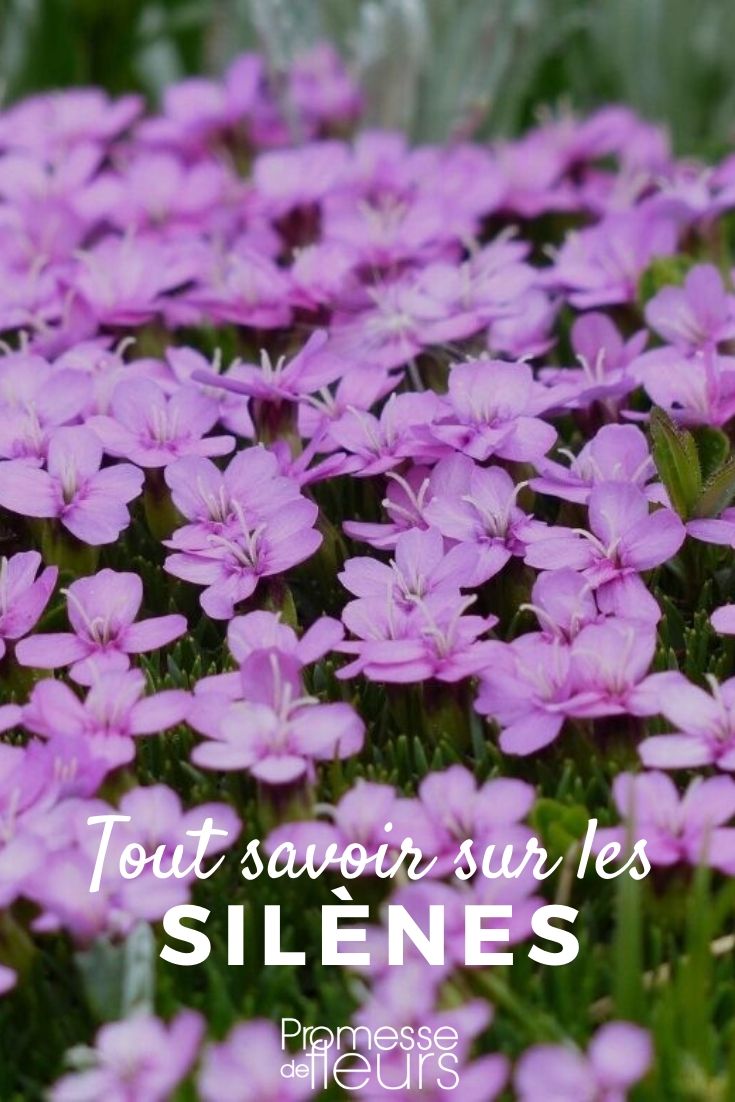































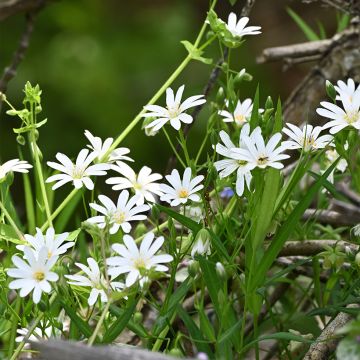



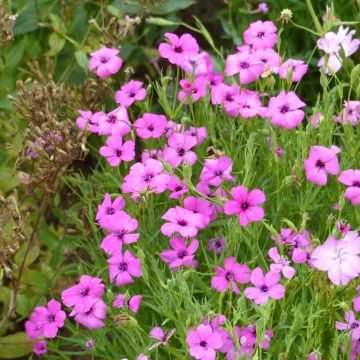
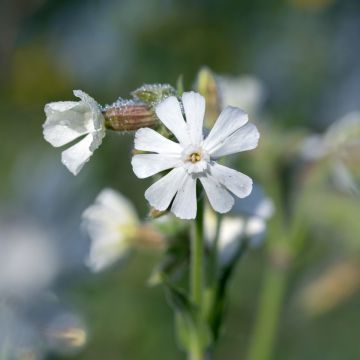
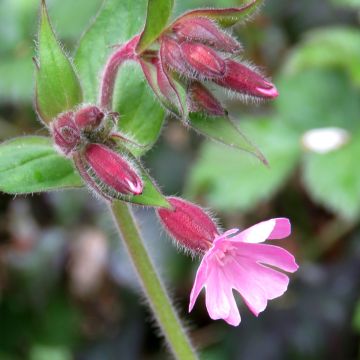
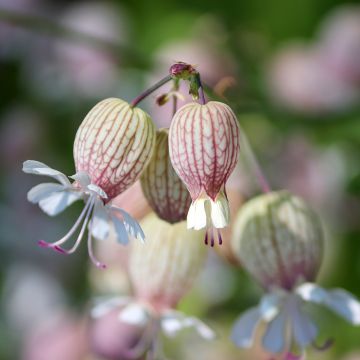
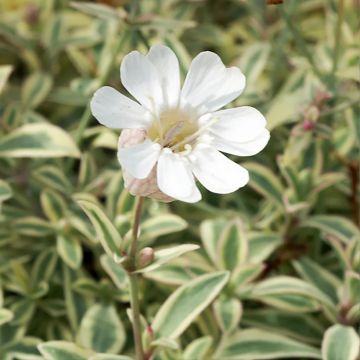
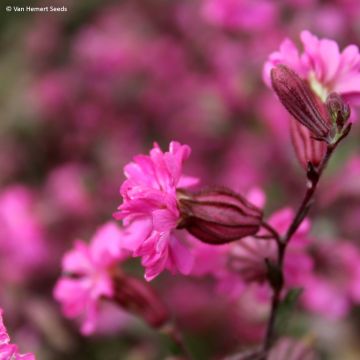
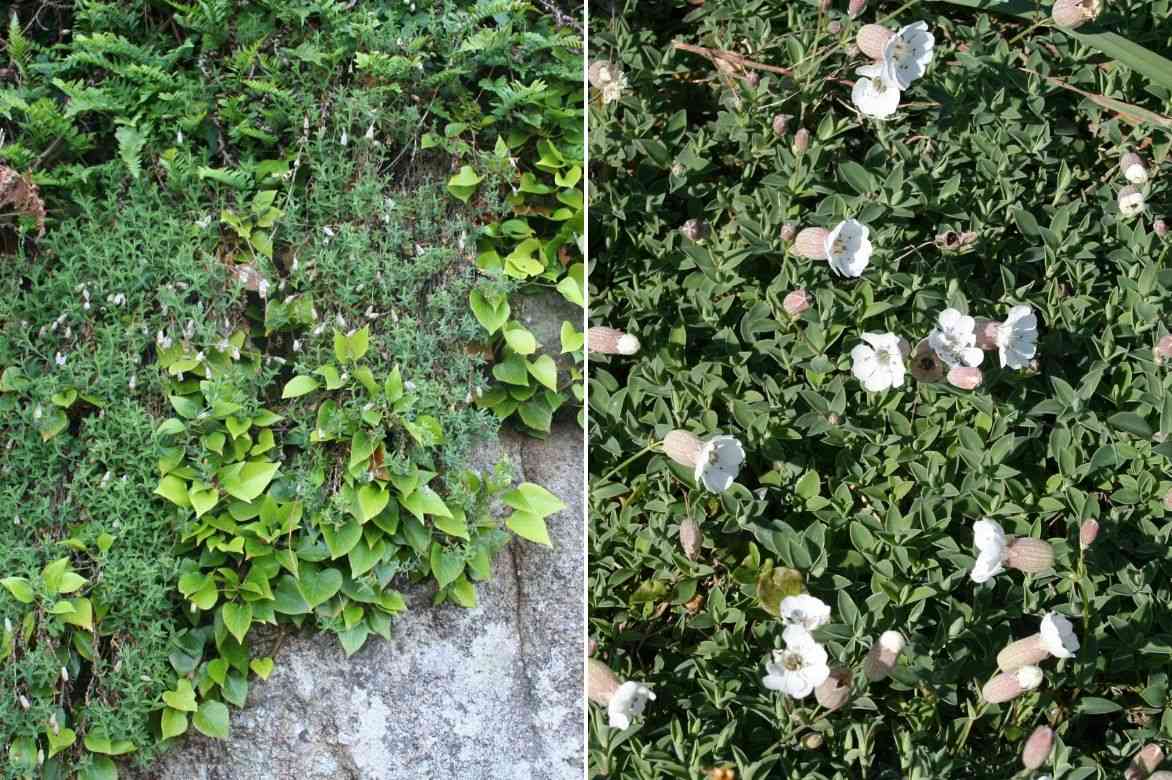
Comments